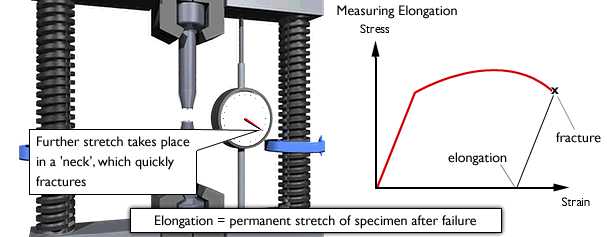Property Information
Elongation
Overview
- Elongation to failure is a measure of the ductility of a materials, in other words it is the amount of strain it can experience before failure in tensile testing.
- A ductile material (most metals and polymers) will record a high elongation. Brittle materials like ceramics tend to show very low elongation because they do not plastically deform.
- Rubber extends by a large amount before failure, but this extension is mostly elastic and is recovered.
Design issues
- Elongation is important in components which absorb energy be deforming plastically (e.g. crash barriers, car bumpers).
- High elongation to failure is important for "plastic hinges" (e.g. video cassette boxes).
- Elongation is important in manufacturing - it measures how much bending and shaping a material can withstand without breaking.
Measurement
Tensile testing is used to find many important material properties. The compression test is similar but uses a stocky specimen to prevent bending.

Units & Values
Because elongation is equal to the failure strain it has no units, but is often given in % strain.



